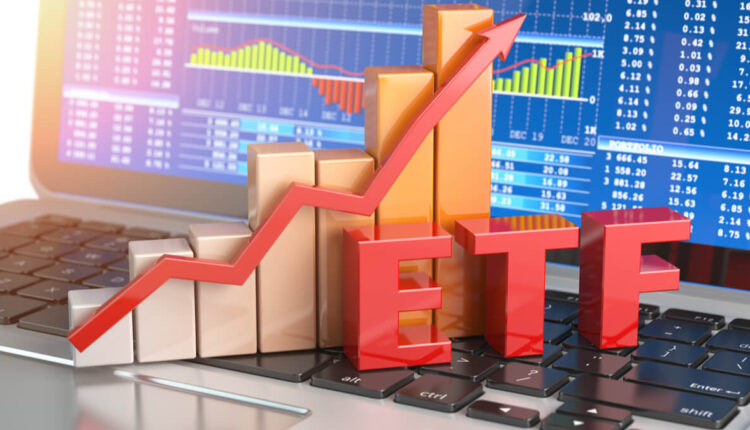In the quest for higher returns, many investors turn to strategies that offer leverage, allowing them to amplify their exposure to financial markets. Two popular methods are leveraged ETFs and pure leverage, such as borrowing on margin. While both approaches aim to enhance returns, they differ significantly in terms of costs, risks, and long-term performance. In this post, we’ll explore the nuances of these strategies, backed by data, to help you determine which might be the better fit for your investment goals.
Understanding Leveraged ETFs
Leveraged ETFs are designed to provide a multiple of the daily performance of a benchmark index. For example, a 2x leveraged ETF seeks to deliver twice the daily return of the underlying index, while a 3x ETF aims for three times the daily return. These funds achieve their leverage through the use of derivatives, such as futures and swaps, which are rebalanced daily to maintain the desired exposure.
Costs and Fees: The Hidden Expense of Convenience
One of the primary appeals of leveraged ETFs is their convenience. They offer a straightforward way to gain leveraged exposure without needing to manage margin accounts or deal with complex financial instruments. However, this convenience comes at a cost. Leveraged ETFs typically have higher expense ratios compared to traditional ETFs, often ranging between 0.9% to 1.0% annually. This is significantly higher than the expense ratios of non-leveraged ETFs, which can be as low as 0.03%.
Moreover, the daily rebalancing process inherent to leveraged ETFs incurs transaction costs and can lead to what is known as “slippage,” where the actual return diverges from the expected return due to the costs of maintaining the leverage. Over time, these costs can significantly erode returns, particularly in volatile markets where frequent rebalancing is required.
Volatility Decay: The Silent Killer of Long-Term Performance
Leveraged ETFs are designed for short-term trading and are not intended to be held over long periods. This is primarily due to the phenomenon of volatility decay, also known as beta slippage. Volatility decay occurs because leveraged ETFs rebalance daily to maintain their leverage ratio. In volatile markets, this daily rebalancing can cause the ETF’s performance to deviate significantly from the underlying index, especially over extended periods.
For example, consider a 2x leveraged ETF that tracks an index. If the index experiences a 10% gain followed by a 10% loss over two days, the index would end up close to its original value. However, the leveraged ETF, due to its daily rebalancing, would not only fail to return to its original value but could also suffer a net loss. This effect is magnified the longer the ETF is held and the more volatile the underlying index becomes.
Tax Efficiency: A Drag on After-Tax Returns
Leveraged ETFs are generally less tax-efficient than other investment vehicles due to their high turnover rate. The frequent buying and selling of derivatives required to maintain leverage often result in short-term capital gains, which are taxed at higher rates than long-term gains. This tax inefficiency can further erode the returns of leveraged ETFs, particularly for investors in higher tax brackets.
The Case for Pure Leverage: Borrowing to Amplify Returns
Pure leverage involves borrowing funds to increase your exposure to investments, typically through margin loans or using derivatives such as options and futures. This approach gives you direct control over your leveraged exposure without the need for daily rebalancing.
Costs: Lower, but Not Without Risks
Borrowing on margin generally incurs lower costs compared to the expense ratios of leveraged ETFs. Margin interest rates vary by broker but typically range between 4% and 9% annually. For investors who can secure lower margin rates, the cost of borrowing can be significantly less than the annual expense ratios of leveraged ETFs.
However, borrowing on margin introduces additional risks. If the value of your investments drops significantly, you could face a margin call, requiring you to either add more funds to your account or sell some of your assets to meet the margin requirements. This could force you to realize losses at an inopportune time, which is a risk not present with leveraged ETFs.
No Rebalancing: Avoiding Volatility Decay
One of the most significant advantages of pure leverage is the absence of daily rebalancing. Since you maintain direct control over your leveraged position, you avoid the volatility decay that plagues leveraged ETFs. This means that over the long term, your returns are more likely to track the expected leveraged performance of your investments, assuming you can manage the risks effectively.
Tax Efficiency: More Control, Better Outcomes
Pure leverage also offers better tax efficiency. Unlike leveraged ETFs, where turnover and frequent rebalancing lead to short-term capital gains, pure leverage allows you to control when you realize gains or losses. This can enable you to take advantage of lower long-term capital gains tax rates, or to strategically harvest losses for tax purposes.
Comparing Long-Term Performance: Leveraged ETFs vs. Pure Leverage
Numerous studies have compared the long-term performance of leveraged ETFs and pure leverage strategies. The consensus is clear: while leveraged ETFs may outperform in strong, trending markets over short periods, pure leverage generally delivers better long-term results.
For example, a study by Charupat and Miu (2013) found that in volatile markets, pure leverage strategies consistently outperformed leveraged ETFs due to the absence of volatility decay and lower costs. Similarly, a study by Jahnke (2009) highlighted that leveraged ETFs are best suited for short-term trading and should not be used as long-term investment vehicles.
Key Takeaways for Investors
- Leveraged ETFs are best used for short-term trades where the investor expects a strong, trending market. Their convenience comes at the cost of higher fees, volatility decay, and tax inefficiency.
- Pure Leverage is generally more cost-effective and offers better long-term performance, particularly in volatile markets. However, it requires careful risk management, including the ability to handle margin calls and the discipline to avoid over-leveraging.
- Tax Considerations should play a significant role in your decision. Leveraged ETFs often generate short-term capital gains, which can reduce after-tax returns. Pure leverage allows for more control over taxable events, potentially enhancing after-tax performance.
Conclusion: Which Strategy is Right for You?
The choice between leveraged ETFs and pure leverage ultimately depends on your investment goals, time horizon, and risk tolerance. If you’re a short-term trader looking for easy access to leverage, leveraged ETFs might be the right tool for you. However, if you’re focused on long-term growth and are comfortable managing the risks of borrowing, pure leverage could provide superior returns.
Before making a decision, consider the costs, risks, and tax implications of each strategy. For many investors, a hybrid approach—using leveraged ETFs for short-term opportunities and pure leverage for long-term investments—might offer the best of both worlds.
Sources:
- Jahnke, F. (2009). The Short- and Long-Term Effects of Leveraged ETFs.
- Charupat, N., & Miu, P. (2013). Synthetic Leverage and Volatility Drag.
- Kuan, T., & Liu, H. (2016). Tax and Efficiency Considerations of Leveraged ETFs.




